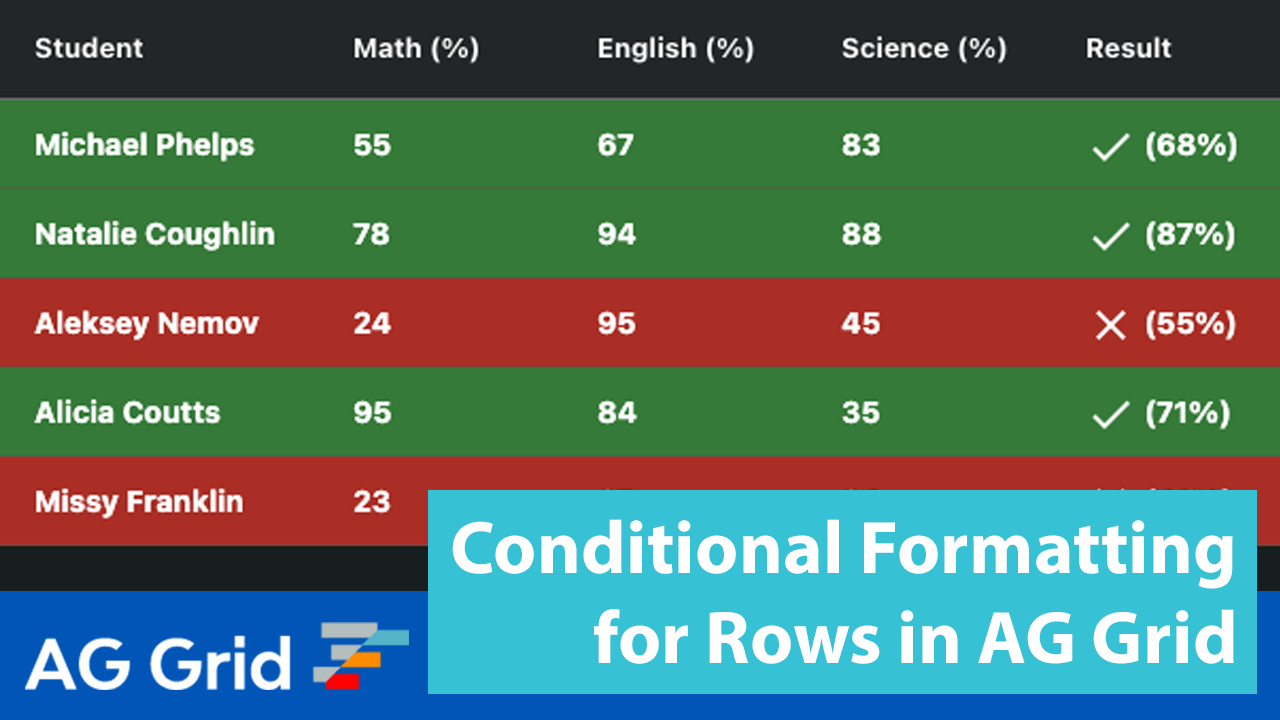

to the DOM, all of which must be rendered for each cell in the grid.įinally, we recommend that all cell renderers strictly use vanilla JS. When we are using a cell renderer we are adding additional elements, event listeners, etc.

It’s important to note that we should only use a cell renderer when necessary.īy default, the textContent of the cell HTML element is set to the (optionally formatted) value. In order to render a cell other than a string, we can use a custom cell renderer.
#AG GRID VALUE GETTER FULL#
Using the cellRenderer() callback functionĪfter the value for a cell is determined, and we have optionally formatted the value, we can use a cell renderer to have full control of how a cell is rendered in AG Grid.īy default, all values are rendered as a string. Here is an example implementation of our decimalValueFormatter() higher-order function. Otherwise, we return the formatted value.

If the data is undefined, which can be the case when using infinite row model or row grouping in AG Grid, then we simply return 0.In this value formatter, we are using the Intl.NumberFormat class to create a new formatter instance, specifying the minimum and maximum number of fraction digits.The higher-order function returns a function that is the value getter that is invoked by AG Grid with the ValueGetterParams object. Our higher-order function has an optional digits parameter that specifies the min and maximum number of digits for the decimal formatting. The generic of TData represents the type for the data parameter, and the generic of TValue represents the type for the value parameter. This enables the implementation of this value formatter to specify two generic types: TData and TValue. We have declared a decimalValueFormatter() higher-order function.Here is an example implementation of our multiplierValueGetter() higher-order function. Finally, we can round the value after multiplying.Within the value getter function, if data is undefined, which can be the case when using infinite row model or row grouping in AG Grid, we return 0.Prior to version 28, this generic type was not available, and as a result the type definition for the data property was any. Because we are using AG Grid v28 (or greater) we can specify the generic type of T for the ValueGetterParams.The multiplierValueGetter() has two required parameters, first, the value property, and second, the multiplier property, both of which are keys of the data provided to the grid that is of type T.

The higher-order function will return the value getter function that will be invoked by AG Grid with provided ValueGetterParams. Using a higher-order function enables us to define the generic type T that extends a Record whose values are of type number.
#AG GRID VALUE GETTER HOW TO#


 0 kommentar(er)
0 kommentar(er)
